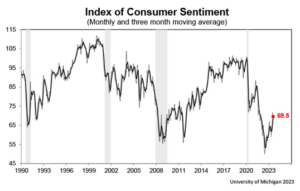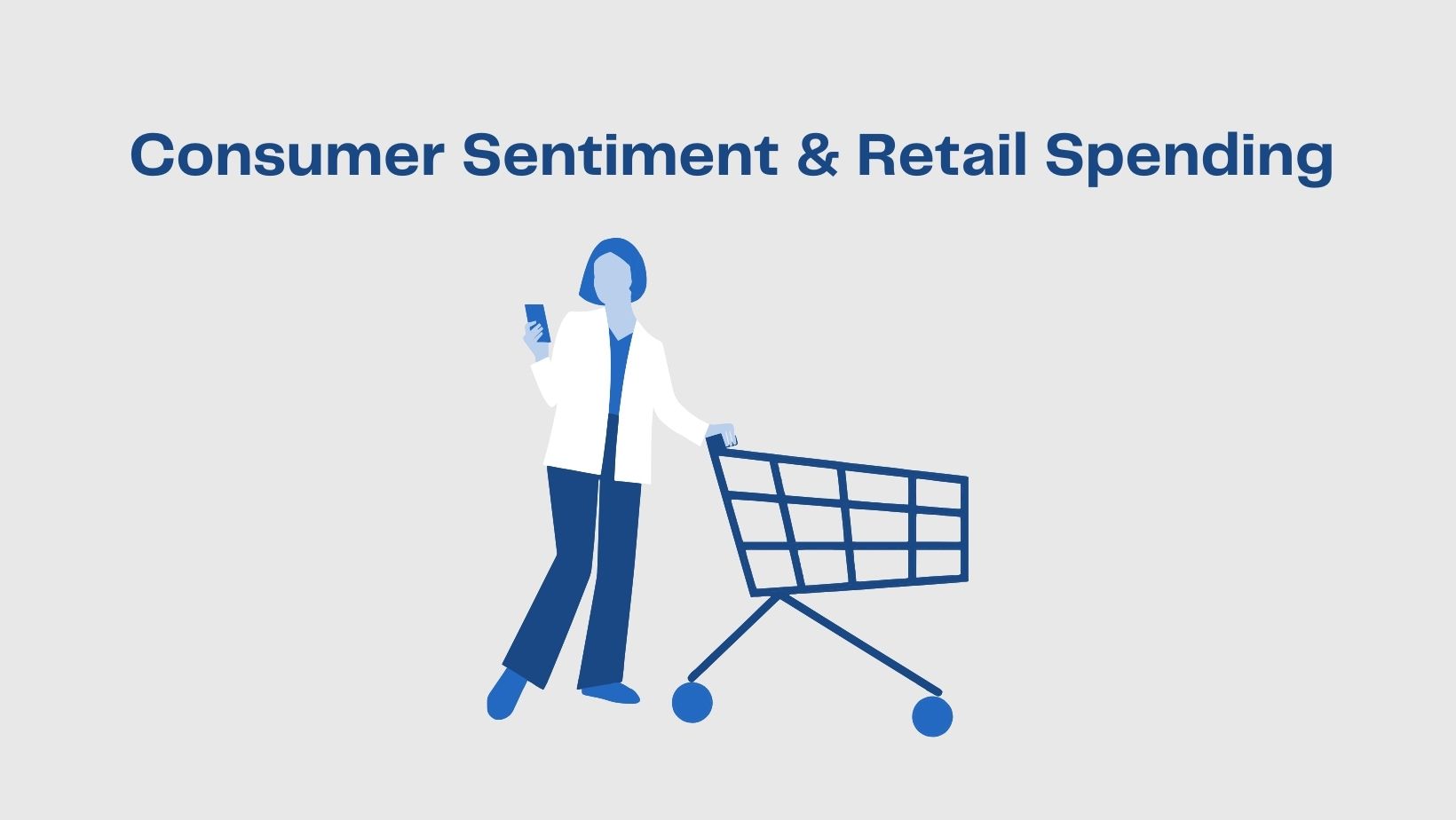Table of Contents
By Lennon Barrow, Business Analyst Intern at Enhanced Retail Solutions LLC.
What is consumer sentiment?
Consumer sentiment is an economic indicator which measures how optimistic consumers are feeling about the future state of the economy. If consumers are feeling optimistic, then they are more likely to make big-ticket purchases and more willing to spend on nonessential items. On the other hand, if consumers are feeling pessimistic, then they are more likely to save money rather than spend. Consumer sentiment helps economists, analysts and inventory planners predict retail demand.
How are consumers feeling currently?
Although consumer sentiment is up significantly from the record low of June 2022, consumers are not exactly optimistic. According to the latest report from the Michigan Consumer Sentiment Index, consumer sentiment has increased over the past several months, but it had a small decline (-2.9%) from July to August. As reported by Surveys of Consumers Director Joanne Hsu, “Consumers perceive that the rapid improvements in the economy from the past three months have moderated, particularly with inflation, and they are tentative about the outlook ahead.”

Consumer Sentiment plays a role in inventory planning
Recent surveys portray a common theme of consumer hesitancy. The rising prices of essential goods and fuel are the major economic concerns for shoppers at all income levels. According to Numerator’s monthly Consumer Sentiment Study, 59% of consumers have a high level of concern regarding the economy and 65% say rising gas prices are impacting their ability to afford other things. As a result, many consumers are experiencing spending discomfort and are planning to cut back on spending.
How will consumer hesitancy impact holiday spending?
Consumer hesitancy will likely manifest in price-conscious and early shopping this holiday season. According to Celigo’s 2023 Holiday Shopping Trends Report, 80% of consumers expect to spend less this holiday season. Nearly half plan to spend less than $1,000 on gifts. Furthermore, half of consumers will start their holiday shopping in September and October. Retailers can anticipate consumers to seek cost-effective purchases and to opt for pre-holiday promotions rather than traditional Black Friday and Cyber Monday sales.
How can retailers prepare themselves?
Retailers must appeal to more economical consumers during the upcoming holiday season while also delivering a seamless shopping experience. As reported by Celigo, 45% of consumers were frustrated by limited stock and increased costs for high-demand products last year. This season, retailers can expect consumers to prioritize product availability as well as convenience, with 75% of consumers relying on online shopping. Consumers desire fast and reliable delivery, low or moderate prices, and customer-friendly return policies. Additionally, the majority of consumers expect more personalized offers from retailers. Retailers can set themselves up for success by implementing efficient inventory management, prioritizing excellent customer support, and utilizing customer preferences to create tailored promotions.







